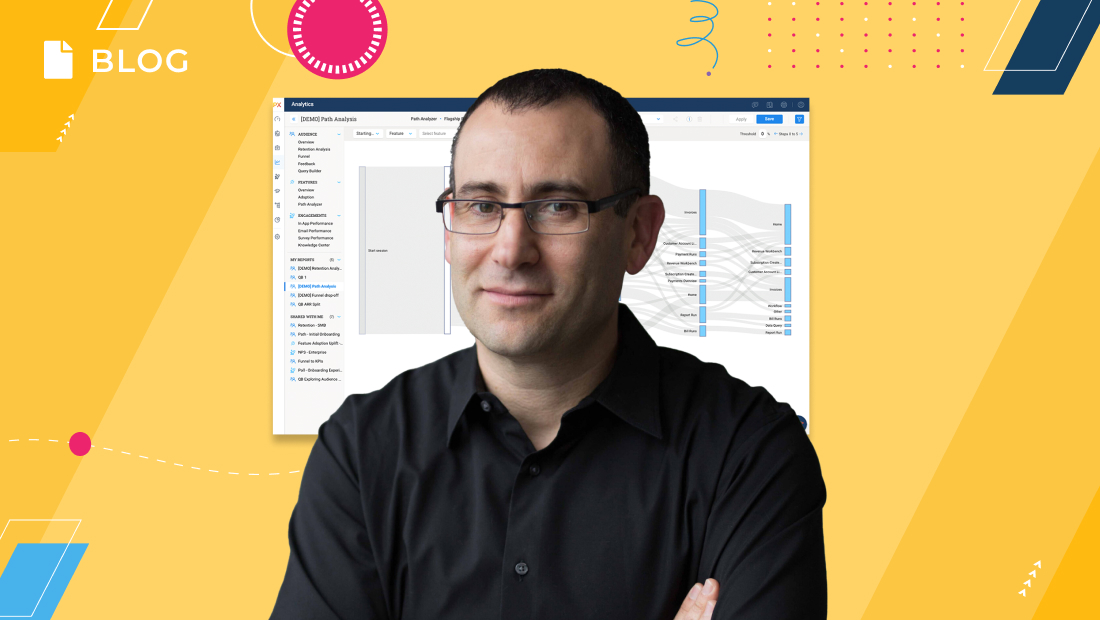This post originally appeared in Saas Industry.
It’s been a rough year for SaaS brands: in the past five months, publicly traded cloud companies have slumped by $1.1 trillion, shedding 40% of their value. Venture funding for SaaS startups is down 38% — better than other tech sectors- but a sign that investors are now thinking long and hard about which companies to support.
That’s the bad news. But there’s good news, too: every market downturn ultimately forces businesses to evolve in new directions and find new ways to drive technological and financial efficiency. Only the fittest will survive — but out of that winnowing, the SaaS sector will emerge with new scaling strategies and ways to acquire, onboard, and retain customers in sustainable and capital-efficient practices. Among other things, the current crisis will accelerate SaaS vendors’ use of product-led growth (PLG) as they make efficient development their number one priority.
That means SaaS vendors can no longer throw money at the “growth” problem. They must build a sustainable growth model anchored in customer lifetime value and profitability.
To weather this storm and keep investors and directors on board, vendors need to take a fresh look at product-led growth (PLG). Capital-efficient customer acquisition and retention have never been more critical — and with the right approach to PLG, it’s possible to find a path to the intelligent, sustainable, and capital-efficient growth that today’s SaaS brands need.
The power of product
What makes product-led growth so powerful? Many SaaS leaders view PLG through customer acquisition, not a holistic strategy to increase customer lifetime value by driving engagement. It is sometimes perceived as a cheap, scalable way to sell software.
Today, according to the 2022 Product-Led Growth Index, almost 66% of SaaS companies use product-led growth strategies. Companies that use PLG are growing 2X faster and more efficiently than vendors with more traditional sales models. Indeed, an acquisition-focused approach to PLG has proven successful for many SaaS brands.
The reality is that most SaaS brands are barely scratching the surface of PLG’s potential. It’s easy to assume that PLG is just a matter of getting out of your customers’ way and letting them use your product. But PLG’s real power comes from putting the product at the center of the customer experience — and seen from that angle, your sales and acquisition efforts are just the story’s beginning.
Done right, PLG does more than just get customers on the hook — it fosters meaningful engagement and cements lasting customer relationships. That’s a big deal because SaaS revenues depend not on making a single sale but on maximizing customers’ lifetime value-maximizing user engagement across the entire lifecycle, from adoption to retention, to expansion and beyond.
Making introductions
Customer acquisition is still the starting point for hyper-growth startups and newly launched products. With two out of every three companies competing primarily on customer experience, PLG offers a great way to scale customer acquisition by allowing users to experience the product without being tied to high-touch sales resources.
But there’s more to effective PLG than just creating an easy on-ramp. Done right, PLG lets you get your entire customer relationship off on the right foot. Even something as straightforward as a sign-up process can be turned into a cycle of mutual discovery: getting to know trial customers’ priorities and leveraging those insights to introduce your product in compelling and personalized ways.
The goal of PLG is to drive successful outcomes by increasing user engagement. Capture information early, then build on that knowledge as the relationship develops, using in-product messaging to smooth the user’s learning curve and accelerate them along the path to realizing the actual value of your product. Product data and user feedback can surface where customers get stuck at a particular point in their journey. Those learnings can evolve into an iterative process that feeds into your roadmap, enabling you to unblock users. It also addresses their challenges with more personalized messaging, guidance, and feature enhancements.
The PLG strategy goes beyond product teams and spans marketing, sales, and customer success, helping them optimize marketing spending and identifying and engaging with high-value users who have demonstrated a propensity to buy or mitigate churn risk. In this light, PLG doesn’t supplant your GTM or success teams — it gives them superpowers, equipping your cross-functional teams with data and automation to help them scale in a more personalized, timely, and efficient way.
Coming back for more
Importantly, PLG isn’t just a great way to drum up new business. It’s also a powerful way to keep customers coming back for more. For SaaS vendors, who get up to 95% of their revenues from existing customers, that’s where an intelligent approach to PLG can deliver transformative value.
By paying attention to how customers use your product and which behaviors drive stickiness, you might find ways to resolve pain points or maximize value for customers who would otherwise be at risk of canceling their contract.
The key is to use the same engagement and personalization that drove PLG acquisition and weave it through the entire customer lifecycle. It’s possible to use contextual messaging to accelerate time to value and steer customers toward product features that align with their objectives, for instance, or to enhance core feature usability to help them achieve their goals. That means your product gets stickier over time, actively creating value to keep your customer satisfied and engaged.
Like your sales teams, your customer success agents can leverage product usage data, interactive messaging, and real-time surveys to identify and support customers you’re at risk of losing. Product insights can also be fed into your development roadmap, helping you evolve in directions that will keep your users coming back for more.
Maximizing revenue
Why does this matter? It matters because the brands that survive the current SaaS crash won’t be the ones with the best sales teams or the ones that get the most people to sign up for their free trials. The companies with real staying power will be those that work to elevate the user experience across the entire lifecycle and to drive customer-lifetime value by scaling customer acquisition and driving retention in sustainable and capital-efficient ways.
Product-led growth is the key to achieving that — as long as you ensure that everyone on your team understands that when it comes to PLG, the free trial is just the thin end of a more holistic end-to-end strategy. What matters is what comes next, as you support, cultivate, and retain your customers — and find intelligent, creative ways to lock in the recurring revenues that your investors and your board are so eager to see.

